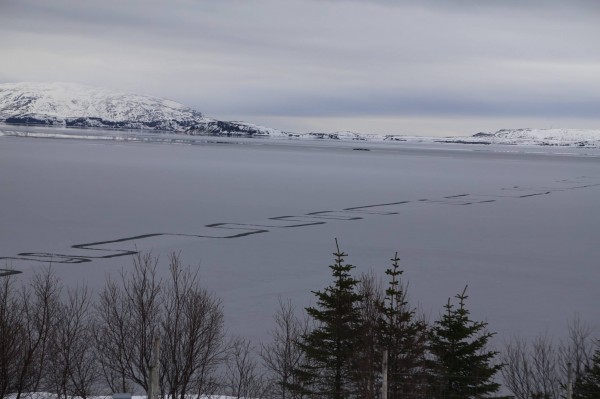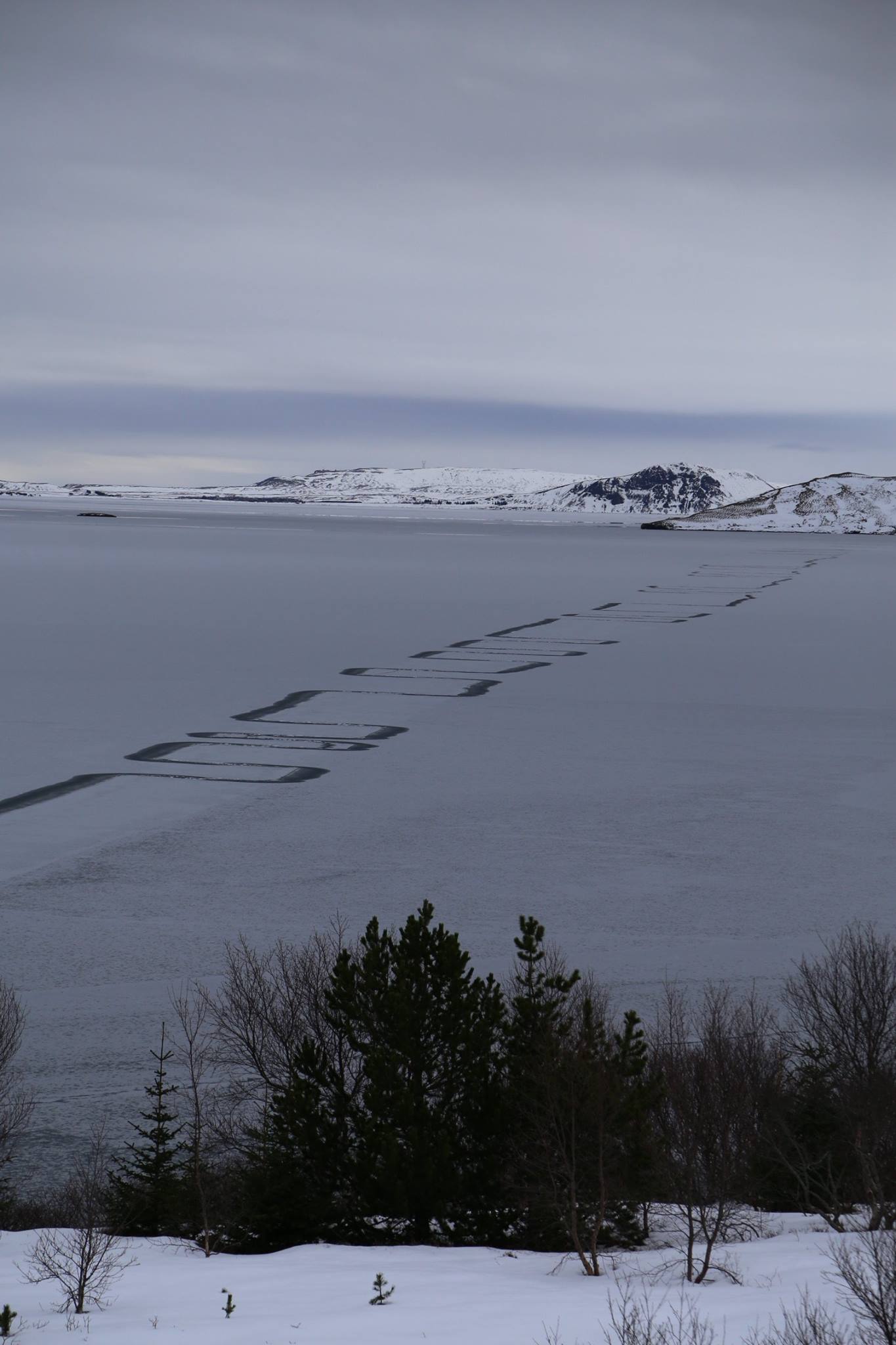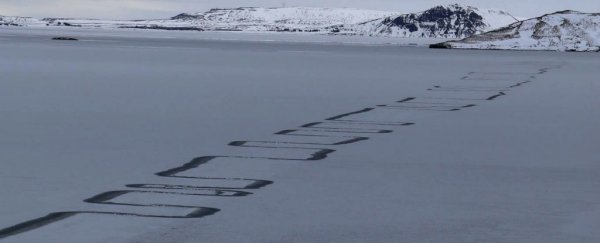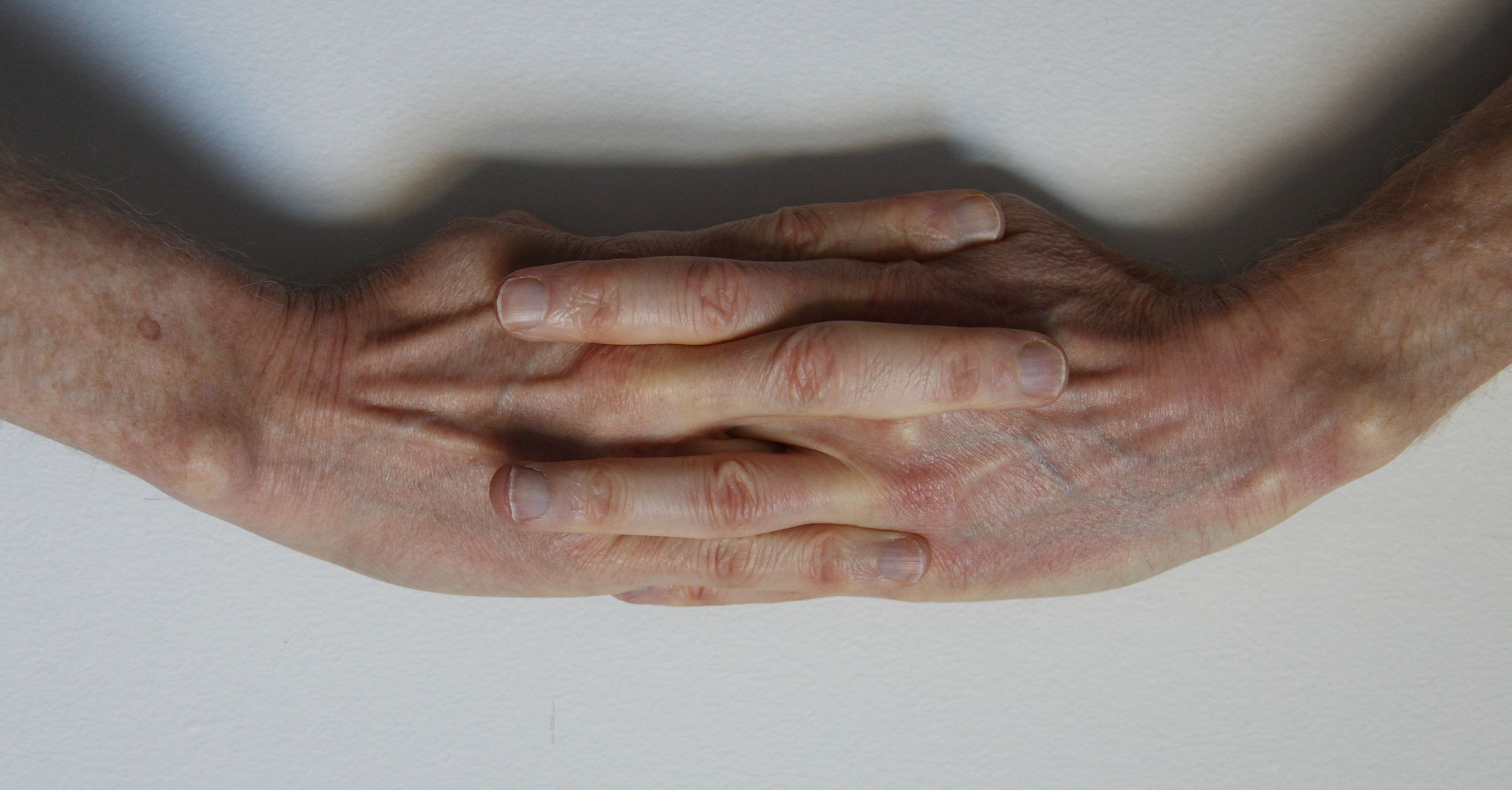Bizarre pictures have been coming out of Iceland's Thingvellir National Park, where other-worldly zig-zag patterns have appeared on the frozen surface of Lake Thingvallavatn.
According to local reports, the pattern stretches for 2 km (1.2 miles) along the ice, and park officials say they've never seen anything like this before.
"On March 9, someone noted a strange-looking pattern on the ice sheet that locals had not seen before," Park official Einar AE Saemundsen told the media.
"The linear and perpendicular pattern stretched more than 2 km out into the lake. The lines did not form in same area as other known cracks in the ice."
"Speculations started, and there was no shortage of alternative explanations from alien activity and unknown monsters in the lake to strange conspiracy theories," he added.
Of course everyone's first instinct is to blame aliens, but we actually have a perfectly logical explanation for this bizarre natural phenomenon - finger rafting, which has been previously recorded in parts of the Arctic and Antarctica.
 Einar AE Saemundsen/Thingvellir National Park
Einar AE Saemundsen/Thingvellir National Park
 Einar AE Saemundsen/Thingvellir National Park
Einar AE Saemundsen/Thingvellir National Park
When you imagine floating ice sheets moving towards each other to eventually meet, conventional wisdom states that they'll either ride over or under each other, like Earth's tectonic plates, or crash into each other and form a line of rubble, like massive ice floes do in Antarctica.
But neither explanation could account for these strange, zig-zag patterns in moving ice sheets that have bewildered scientists for more than half a century.
These natural patterns look like metre-wide, rectangular zigzags, and have only ever been recorded in ice sheets less than about 10 centimetres thick.
"Both sheets … must have the same thickness - which can happen when a single ice sheet breaks up and fragments of it later collide," Jonathan Sherwood explains on the American Physical Society website.
"Since the pattern wasn't noticed anywhere else in nature, most physicists simply chalked it up to some peculiarity in the properties of ice."
That was until John Wettlaufer, professor of geology and geophysics at Yale University, came along.
In a 2007 study led by Wettlaufer, researchers identified a third option for ice sheet collision - sometimes, these ice sheets form a series of interlocking blocks that alternately ride over and under one another.
Called finger rafting, the phenomenon recalls how your own fingers interlock if you push your two hands into one another:
"A surprising pattern, much like the meshed teeth of a zipper, is frequently seen when floating ice sheets collide," Wettlaufer explained at the time.
The Yale team figured this out by setting up experiments that recreate the movements of large ice sheets floating on water to see how this phenomenon would play out.
"Using thin sheets of sealing wax floating on water, we observed finger rafting simply by pushing two sheets in contact along their long edge," the team explains in paper published in Physical Review Letters.
"The [experimental] fingers have the strong rectilinear features reported of finger rafting ice, and also exhibit a characteristic finger width."
The researchers suspect that because ice - or something else like floating sealing wax - often has naturally ragged edges, when two such sheets make contact, the uneven edges can either move under or over the other.
"Because the floating sheets are slightly flexible, each responds by developing a series of ripples or corrugations spreading out from the initial point of disturbance," Sherwood reports for the American Physical Society.
"It's something like what happens as you haul yourself onto a wide air mattress in a swimming pool: the sections next to you rise up as you pull down, and sections beyond them slump down again."
Experts are in agreement that the same phenomenon is what's occurring in Iceland, but that doesn't make it any less remarkable for the locals.
"Scientific explanations came from experts that recognised this as a very rare phenomenon called finger rafting," Saemundsen said in a recent public statement.
"But it is not known to have ever been seen before at Lake Thingvallavatn."

